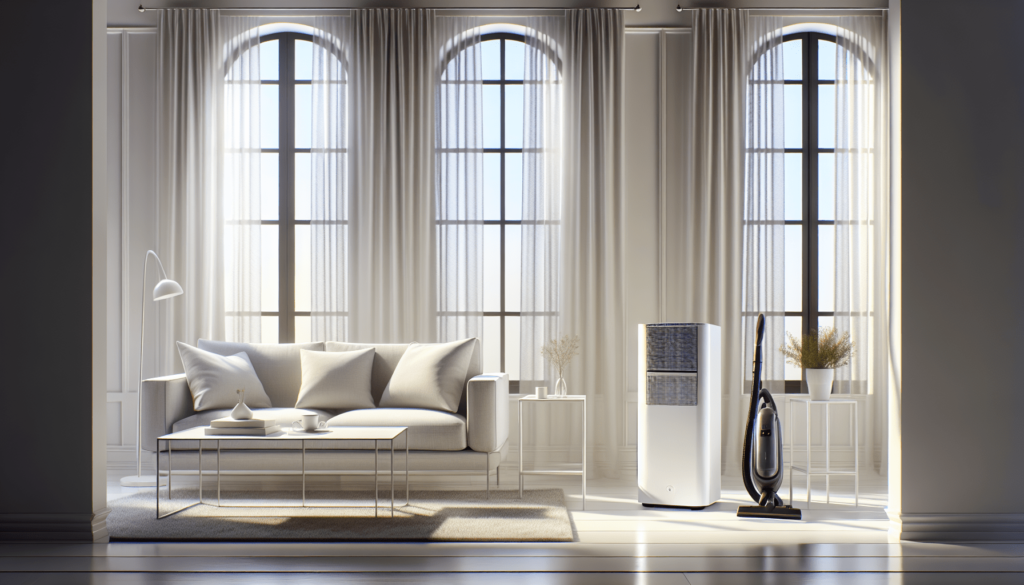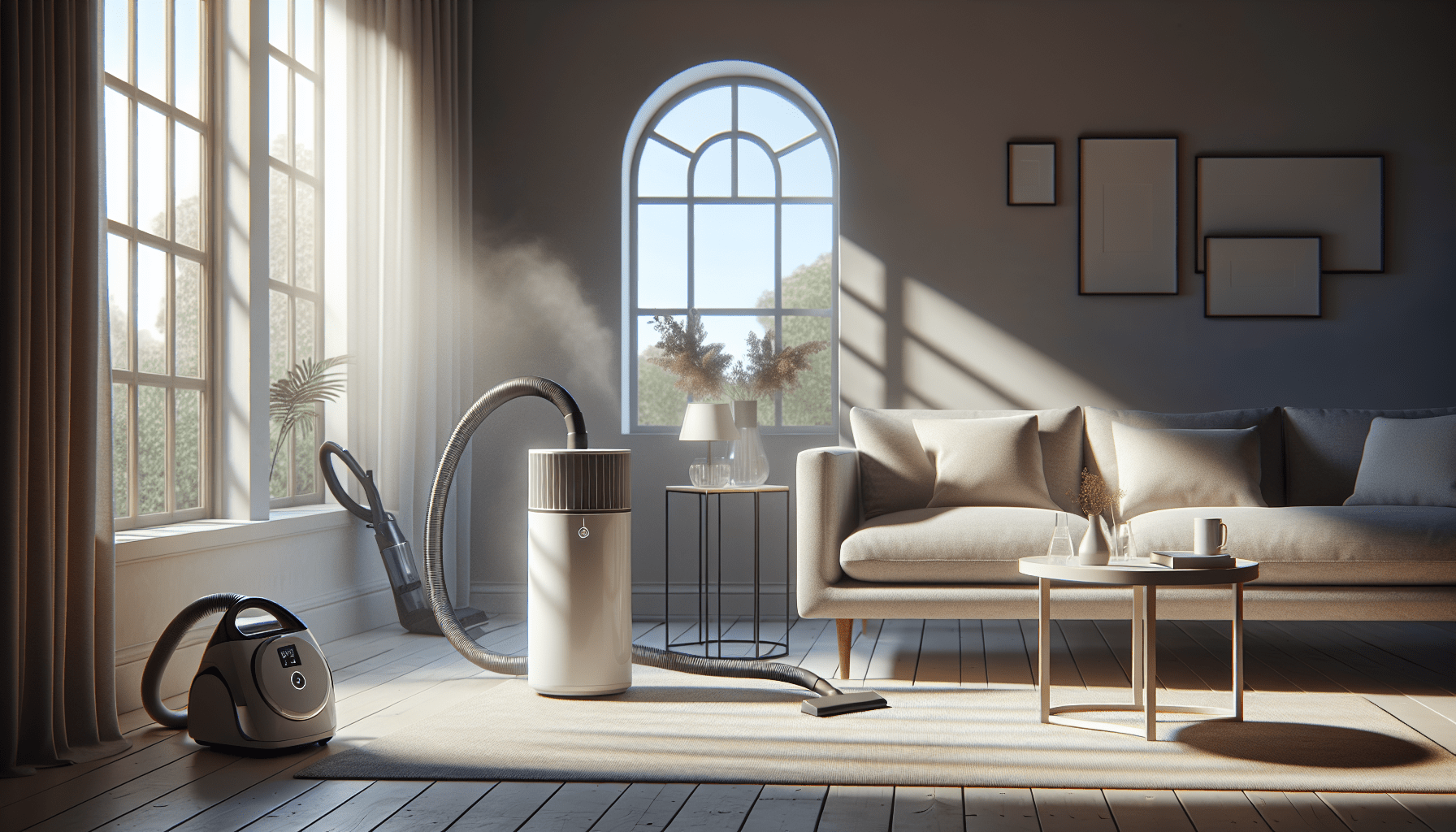Welcome! In “Effective Ways to Reduce Allergens in Your Living Space,” you’ll discover essential tips designed to create a healthier environment for you and your loved ones. Imagine breathing easier, feeling more comfortable, and enjoying your home without the constant sneezing or itchy eyes. This article will walk you through practical and easy-to-implement strategies to minimize allergens, making your living area a cleaner, more inviting space. Let’s get started on turning your home into an allergen-free haven! Have you ever felt like your living space could be contributing to your allergies? Many people don’t realize that their homes may harbor a variety of allergens that can trigger discomfort. Let’s explore some effective ways to reduce allergens in your living space, so you can breathe easier and enjoy your home even more.
Understanding Allergens
Before diving into strategies to reduce allergens, it’s crucial to understand what they are. Allergens are substances that can cause allergic reactions. They can be found in various forms such as dust, pollen, pet dander, mold, and certain chemicals. Knowing the sources of these allergens is the first step towards mitigating their effects in your living area.
Common Indoor Allergens
Here are some of the most common allergens you might find in your home:
| Allergen | Source | Symptoms |
|---|---|---|
| Dust Mites | Bedding, upholstery | Sneezing, runny nose, itchy eyes |
| Pet Dander | Pets like cats and dogs | Nasal congestion, coughing, watery eyes |
| Pollen | Airborne during specific seasons | Sneezing, itchy throat, watery eyes |
| Mold | Damp areas like bathrooms | Asthma, coughing, skin rashes |
| Chemicals | Household cleaners, paints | Headaches, nausea, eye irritation |
Now that you have a clear understanding of allergens and their sources, let’s delve into the effective ways to reduce them.
Reducing Dust and Dust Mites
Dust and dust mites are among the most common indoor allergens. They thrive in warm, humid environments and can be found in bedding, upholstery, and carpets.
Wash Bedding and Curtains Regularly
Your bed is one of the most beloved spots for dust mites. Washing your bedding, including sheets, pillowcases, and blankets, at least once a week in hot water (130°F or higher) can significantly reduce dust mites. Don’t forget about curtains, too—these can be a magnet for dust.
Use Dust-Mite Proof Covers
Encasing your mattress, box springs, and pillows in dust-mite-proof covers can create a barrier that prevents dust mites from settling in. These covers are designed to be allergen-proof while still being comfortable for you.
Vacuum Frequently
Regular vacuuming with a HEPA filter vacuum cleaner helps control dust levels in your home. HEPA filters can trap small particles that would typically escape a standard vacuum cleaner. Make sure to vacuum carpets, rugs, and upholstery.
Minimize Clutter
Clutter serves as a haven for dust. Reducing clutter means fewer places for dust to accumulate. Keep surfaces clear, and store items in closed containers or cabinets whenever possible.

Managing Pet Dander
Pets are wonderful companions, but they can also be a source of allergens, especially their dander (tiny, even microscopic, flecks of skin shed by cats, dogs, rodents, birds, and other animals with fur or feathers).
Regular Grooming
Regularly grooming your pets can reduce the amount of dander they shed. Bathing your pet once a week can help, but make sure to use a pet-friendly shampoo to avoid skin irritation.
Create Pet-Free Zones
Designate certain areas of your home as pet-free zones. Most importantly, keep your bedroom off-limits to pets. This helps reduce the amount of dander in the area where you sleep.
Clean Pet Bedding
Laundry isn’t just for human bedding! Wash your pet’s bedding and toys frequently in hot water to remove dander. This simple step can make a significant difference.
Air Purifiers
Consider using HEPA air purifiers in rooms where your pet spends the most time. Air purifiers can help capture airborne dander and reduce its presence in your home.
Controlling Pollen
Pollen can easily enter your home through open windows and doors. While it’s great to air out your house, doing so can invite these tiny particulates indoors.
Keep Windows Closed
During high pollen seasons (spring and fall, primarily), keep your windows closed to prevent pollen from getting inside. Rely on air conditioning to maintain indoor air quality.
Use Air Filters
Install high-efficiency particulate air (HEPA) filters in your HVAC system. These filters can trap pollen and other allergens, ensuring they don’t circulate throughout your home.
Shower and Change Clothes
If you’ve been outside for an extended period, consider showering and changing your clothes when you come back indoors. This helps to remove any pollen that may have settled on you.

Combating Mold and Mildew
Mold and mildew thrive in damp, humid environments. Bathrooms, basements, and around windows are typical places where mold spores can easily grow.
Control Humidity Levels
Using a dehumidifier can help maintain a low humidity level in your home (ideally between 30% and 50%). This can significantly reduce the chance for mold growth.
Fix Leaks Immediately
Address any leaks in your home as soon as you notice them. Leaky faucets, pipes, or roofs can create moist environments where mold spores can thrive.
Clean and Ventilate
Regularly clean bathroom tiles, shower curtains, and other surfaces exposed to moisture. Ensure that these areas are well-ventilated, either through windows or exhaust fans, to keep air circulating and reduce humidity.
Avoiding Chemical Allergens
Many household products contain chemicals that can trigger allergic reactions. This includes cleaning products, paints, and even some types of furniture.
Choose Hypoallergenic Products
Opt for hypoallergenic and fragrance-free cleaning products. There are many natural and low-chemical options available that are just as effective but less likely to trigger allergies.
Store Chemicals Safely
Store chemicals in a well-ventilated area, away from living spaces. Ensure that containers are sealed tightly to prevent fumes from escaping.
Ventilate While Cleaning
When using cleaning products, make sure to ventilate the area well. Open windows and use fans to ensure that fumes do not linger in the air.
General Tips for Maintaining an Allergen-Free Home
Maintaining an allergen-free home doesn’t have to be overwhelming. Here are some overarching tips to make the process even easier.
Regular Cleaning Schedule
Set up a regular cleaning schedule. Consistent maintenance is key to keeping allergens at bay. This includes dusting, vacuuming, mopping, and washing fabrics.
Choose the Right Furnishings
Select furnishings that are less likely to harbor allergens. For example, leather or vinyl furniture can be easier to clean compared to fabric-upholstered options. Opt for hardwood or tile floors instead of carpet, which can trap dust and dander.
Opt for Allergen-Friendly Fabrics
Choosing allergen-friendly fabrics for your home, such as microfiber or tightly woven cotton, can help reduce allergens. These fabrics are less likely to attract and hold onto dust and dander.
Invest in Quality Air Purifiers
Quality air purifiers, especially those with HEPA filters, can significantly improve indoor air quality by capturing allergenic particles. Place them in the rooms where you spend the most time, such as the living room and bedroom.
Keep Indoor Plants in Check
While plants can improve air quality and bring a touch of nature indoors, some can contribute to indoor allergens. Choose hypoallergenic plants and ensure that they do not develop mold in their soil.
Conclusion
Reducing allergens in your living space is a continuous effort that pays off in comfort and well-being. By taking proactive steps—whether it’s regular cleaning, managing pet dander, controlling pollen, combating mold, or avoiding chemical allergens—you can create a healthier and more pleasant environment for yourself and your loved ones.
Remember, each small change can make a big difference. Implement these tips gradually, and you’ll start to notice the benefits in no time. Here’s to a cleaner, allergen-free home!
Feel free to experiment with these strategies and see what works best for your particular situation. It’s all about finding the right balance that allows you to enjoy your living space without the constant bother of allergies. So, take a deep breath, and let’s get started on achieving a cleaner, more breathable home!
